The President of India and Former Presidents
Friday 1st of January 2016

Sharing is caring
The President of India is the Head of State and the Supreme Commander of the Indian Armed Forces. The President is indirectly elected by the people through elected members of both the houses of Parliament and the Legislative Assemblies of all the states and Legislative Assemblies New Delhi and Puducherry and serves for a renewable term of five years. The oath of the President is taken in the presence of the Chief Justice of India, and in his/her absence, by the most senior judge of the Supreme Court.
The Constitution of India states that the President can exercise his powers directly or by subordinate authority, with few exceptions, all of the executive authority vested in the President are, in practice, exercised by the Prime Minister with the help of the Council of Ministers.
The President of India resides in an estate in New Delhi known as the Rashtrapati Bhavan, which roughly translates as President's House. The 13th and current President is Pranab Mukherjee, who was elected on 22 July 2012, and sworn in on 25 July 2012. He is also the first Bengali to be elected as President.
Origin and History
India achieved independence from the British on 15 August 1947, initially as a Dominion within the Commonwealth of Nations with George VI as king, represented in the country by a governor-general. Still, following this, the Constituent Assembly of India, under the leadership of Dr. B. R. Ambedkar, undertook the process of drafting a completely new constitution for the country. The Constitution of India was eventually enacted on 26 November 1949 and came into force on 26 January 1950, making India a republic. The offices of monarch and governor-general were replaced by the new office of President of India, with Rajendra Prasad as the first incumbent.
Duties & Powers
The primary duty of the President is to preserve, protect and defend the constitution and the law of India as made part of his oath (Indian constitution). The President is the common head of all independent constitutional entities. All his actions, recommendations and supervisory powers over the executive and legislative entities of India shall be used in accordance to uphold the constitution. There is no bar on the actions of the President to contest in the court of law.
Legislative power is constitutionally vested by the Parliament of India of which the president is the head, to facilitate the law making process as per the constitution. The President summons both the Houses (the Lok Sabha and the Rajya Sabha) of the Parliament and prorogues them.
All bills passed by the Parliament can become laws only after receiving the assent of the President. When either of the two Houses of the Parliament of India is not in session, and if the government feels the need for an immediate procedure, the President can promulgate ordinances which have the same force and effect as laws passed by Parliament. These are in the nature of interim or temporary legislation and their continuance is subject to parliamentary approval.
Appointment
The President appoints, as Prime Minister, the person most likely to command the support of the majority in the Lok Sabha (usually the leader of the majority party or coalition). The President then appoints the other members of the Council of Ministers, distributing portfolios to them on the advice of the Prime Minister.
The Council of Ministers remains in power at the 'pleasure' of the President.
The President appoints 12 members of the Rajya Sabha from amongst persons who have special knowledge or practical experience in respect of such matters as literature, science, art and social service.
The President is responsible for making a wide variety of appointments. These include:[17]:72
- Governors of States
- The Chief Justice, other judges of the Supreme Court and High Courts of India
- The Chief Minister of the National capital territory of Delhi
- The Attorney General
- The Comptroller and Auditor General
- The Chief Election Commissioner and other Election Commissioners
- The Chairman and other Members of the Union Public Service Commission
- Vice Chancellor of the central university and academic staff of the central university through his nominee
- Ambassadors and High Commissioners to other countries (only through the list of names given by the Prime Minister)
Judicial
The President appoints the Chief Justice of the Union Judiciary and other judges on the advice of the Chief Justice. He dismisses the judges if and only if the two Houses of the Parliament pass resolutions to that effect by a two-thirds majority of the members present. According to Indian Constitution, if the President considers a question of law or a matter of public importance has arisen, he can ask for the advisory opinion of the Supreme Court.
Diplomatic
All international treaties and agreements are negotiated and concluded on behalf of the President. However, in practice, such negotiations are usually carried out by the Prime Minister along with his Cabinet (especially the Foreign Minister). Also, such treaties are subject to the approval of the Parliament. The President represents India in international forums and affairs where such a function is chiefly ceremonial. The President may also send and receive diplomats, i.e. the officers from the Indian Foreign Service. The President is the first citizen of the country.
Military
The President is the Supreme Commander of the Indian Armed Forces. The President can declare war or conclude peace, on the advice of the Union Council of Ministers headed by the Prime Minister. All-important treaties and contracts are made in the President's name. He also appoints the chiefs of the service branches of the armed forces.
National emergency
A national emergency can be declared in the whole of India or a part of its territory for causes of war or armed rebellion or an external aggression. Such an emergency was declared in India in 1962 (Indo-China war), 1971 (Indo-Pakistan war), and 1975 to 1977 (declared by Indira Gandhi.)
The India Constitution, the President can declare such an emergency only on the basis of a written request by the Cabinet Ministers headed by the Prime Minister. Such a proclamation must be approved by the Parliament within one month. Such an emergency can be imposed for six months. It can be extended by six months by repeated parliamentary approval-there is no maximum duration.
National Emergency has only been proclaimed in India twice till date. It was declared first in 1962 by President Sarvepalli Radhakrishnan, during the Sino-Indian War. The second emergency in India was from 1975-77 proclaimed by President Fakhruddin Ali Ahmed, with Indira Gandhi as Prime Minister.
Eligibility
The Constitution sets the principle qualifications one must meet to be eligible to the office of the President. A President must be:
- A citizen of India
- Of 35 years of age or above
- Qualified to become a member of the Lok-Sabha
A person shall not be eligible for election as President if he holds any office of profit under the Government of India or the Government of any State or under any local or other authority subject to the control of any of the said Governments.
Certain office-holders, however, are permitted to stand as Presidential candidates. These are:
- The current Vice President.
- The Governor of any State.
- A Minister of the Union or of any State (Including Prime Minister and Chief Ministers)
In the event that the Vice President, a State Governor or a Minister is elected President, they are considered to have vacated their previous office on the date they begin serving as President.
Conditions for the Presidency
Certain conditions, as per the Constitution, debar an otherwise eligible citizen from contesting the presidential elections. The conditions are:
- The President shall not be a member of either House of Parliament or of a House of the Legislature of any State, and if a member of either House of Parliament or of a House of the Legislature of any State be elected President, he shall be deemed to have vacated his seat in that House on the date on which he enters upon his office as President.
- The President shall not hold any other office of profit.
- The President shall be entitled without payment of rent to the use of his official residences and shall be also entitled to such emoluments, allowances and privileges as may be determined by Parliament by law and until provision in that behalf is so made, such emoluments, allowances and privileges as are specified in the Second Schedule.
- The emoluments and allowances of the President shall not be diminished during his term of office.
Oath or affirmation
The President is required to make and subscribe in the presence of the Chief Justice of India (or in his absence, the senior-most Judge of the Supreme Court), an oath or affirmation that he/she shall protect, preserve and defend the Constitution as follows:
I, (name), do swear in the name of God (or solemnly affirm) that I will faithfully execute the office of President (or discharge the functions of the President) of the Republic of India, and will to the best of my ability preserve, protect and defend the Constitution and the law, and that I will devote myself to the service and well-being of the people of the Republic of India.
— Constitution of India
Emoluments
The President of India used to receive ?10,000 (US$100) per month as per the Second Schedule of the Constitution. This amount was increased to ?50,000 (US$700) in 1998. On 11 September 2008 the Government of India increased the salary of the President to ?1.5 lakh (US$2,200). However, almost everything that the President does or wants to do is taken care of by the annual ?225 million (US$3.3 million) budget that the Government allots for his or her upkeep. Rashtrapati Bhavan, the President's official residence, is the largest Presidential Palace in the world. The Rashtrapati Nilayam at Bolarum, Hyderabad and Retreat Building at Chharabra, Shimla are the official Retreat Residences of the President of India. The official state car of the President is a custom-built heavily armoured Mercedes Benz S600 (W221) Pullman Guard.
Presidential Amenities
The Rashtrapati Bhavan
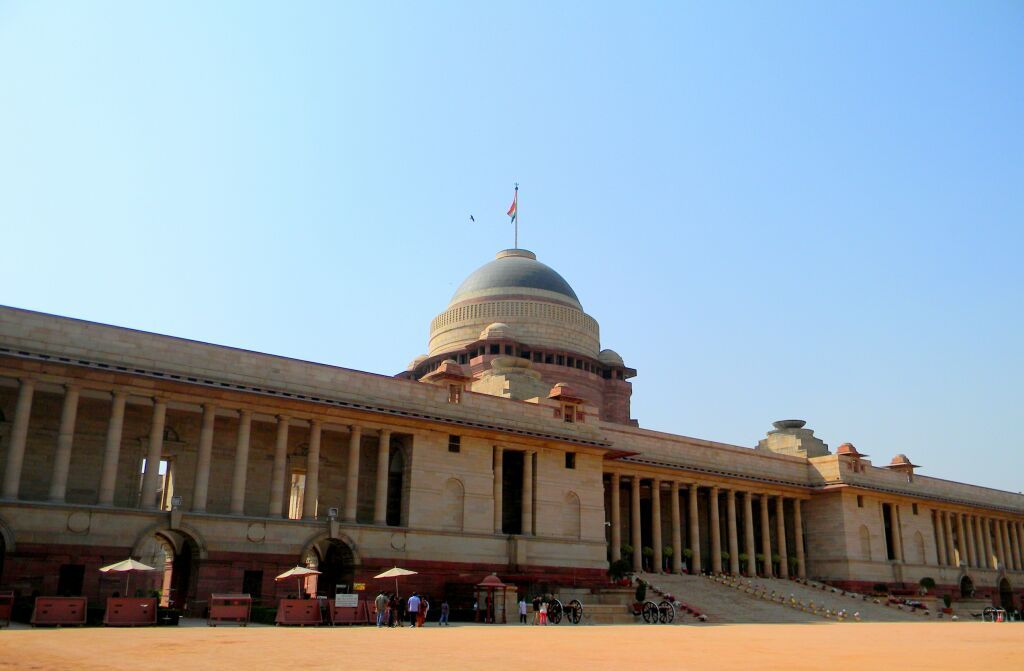 The Rashtrapati Bhavan, "Presidential Residence" is the official home of the President of India, located in New Delhi, India. It may refer to only the mansion (the 340-room main building) that has the president's official residence, halls, guest rooms and offices, it may also refer to the entire 130-hectare (320 acre) President Estate that additionally includes huge presidential gardens (Mughal Gardens), large open spaces, residences of bodyguards and staff, stables, other offices and utilities within its perimeter walls. The main palace building was formerly known as Viceroy's House. In terms of area, was the largest residence of a head of state in the world until the Presidential Complex of Turkey opened 29 October 2014.
The Rashtrapati Bhavan, "Presidential Residence" is the official home of the President of India, located in New Delhi, India. It may refer to only the mansion (the 340-room main building) that has the president's official residence, halls, guest rooms and offices, it may also refer to the entire 130-hectare (320 acre) President Estate that additionally includes huge presidential gardens (Mughal Gardens), large open spaces, residences of bodyguards and staff, stables, other offices and utilities within its perimeter walls. The main palace building was formerly known as Viceroy's House. In terms of area, was the largest residence of a head of state in the world until the Presidential Complex of Turkey opened 29 October 2014.
General information
- Location: New Delhi, Delhi, India
- Coordinates: 28°36′51.63″N 77°11′59.29″E
- Current tenants : Pranab Mukherjee, President of India
- Construction started: 1912
- Completed: 1929
- Floor area: 200,000 sq ft (19,000 m2)
- Architect: Edwin Lutyens
Rashtrapati Nilayam
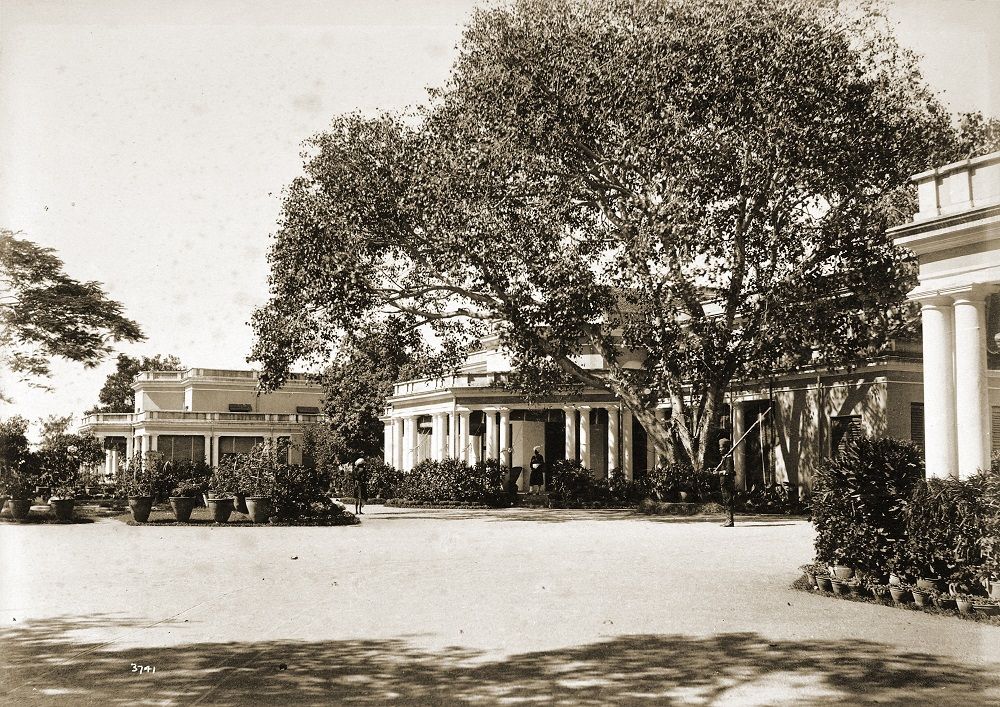 Rashtrapati Nilayam (literally the "President's House") originally known as Residency House is the official retreat of the President of India located in Hyderabad, Telangana, India, where President stays for at least once a year and conducts official business. It is also used as a guest house for visiting dignitaries. It is located in Bolarum, Secunderabad. It was thrown open for public viewing from 1 January to 10 January, with entry being free.
Rashtrapati Nilayam (literally the "President's House") originally known as Residency House is the official retreat of the President of India located in Hyderabad, Telangana, India, where President stays for at least once a year and conducts official business. It is also used as a guest house for visiting dignitaries. It is located in Bolarum, Secunderabad. It was thrown open for public viewing from 1 January to 10 January, with entry being free.
General information
- Type: Official retreat
- Location: Hyderabad, Telangana, India
- Completed: 1860
The President's Bodyguards
The President's Bodyguard (PBG) is an elite household cavalry regiment of the Indian Army. It is senior-most in the order of precedence of the units of the Indian Army. The primary role of the President's Bodyguard is to escort and protect the President of India which is why the regiment is based in the Rashtrapati Bhavan in New Delhi, India. It is equipped as a mounted unit, with horses for ceremonies at the presidential palace and BTR-60 vehicles for use in combat. The personnel of the regiment are also trained as paratroopers and nominally are expected to lead in airborne assaults in the role of pathfinders. The regiment is the successor of the Governor General's Bodyguard of the British Raj.
General information
- Active: 1773 – present
- Country : India
- Branch: Indian Army
- Type: Household cavalry
- Role: Ceremonial during peace. Armoured reconnaissance & parachute pathfinders during war.
- Size: Regiment (4 officers, 20 JCOs & 198 soldiers)
- Motto: Bharat Mata Ki Jai (Victory to Mother India)
- March: Sare Jahan Se Achha, Hindustan Hamara
- Equipment: BTR-60
- Ceremonial chief: President of India
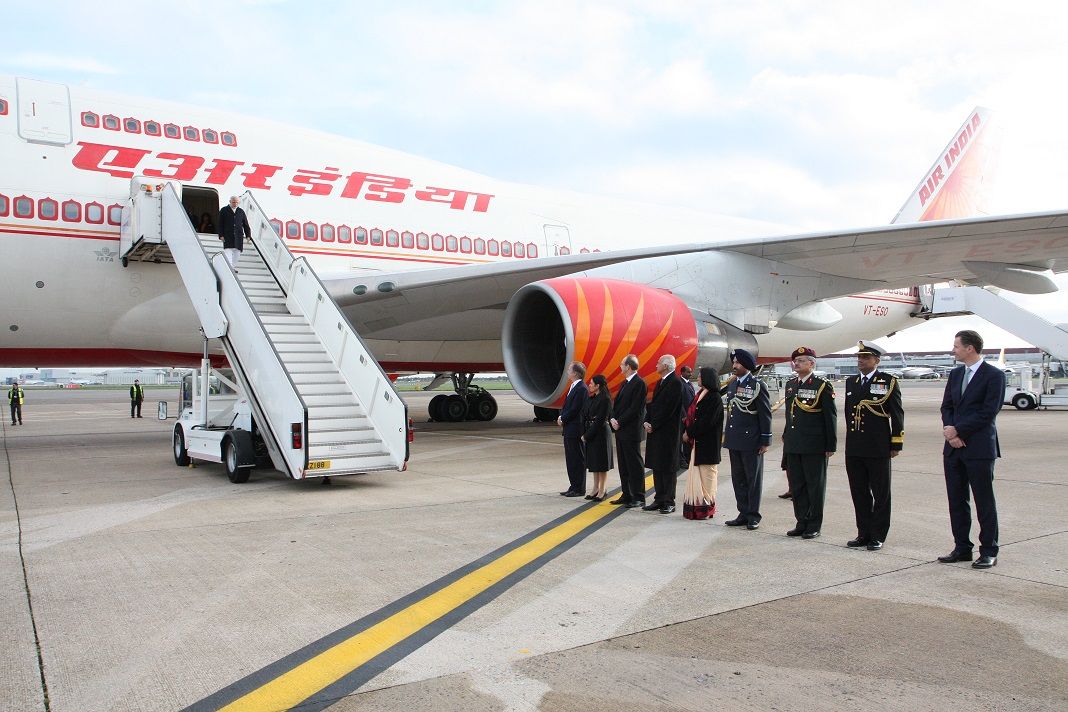
Air India One
Air India One (also referred to as AI-1 or AIC001) is the call sign of any aircraft with the Prime Minister or President of India on-board. Air India is the national airline of India. The aircraft are operated as VIP flights by the Indian Air Force (IAF). The IAF's Air Headquarters Communication Squadron, based at Indira Gandhi International Airport (formerly Palam Air Force Base) in New Delhi, is in charge of operating these aircraft.
List of President of India
Dr. Rajendra Prasad (1884 –1963)
Rajendra Prasad was the first President of the Republic of India. An Indian political leader, lawyer by training, Prasad joined the Indian National Congress during the Indian independence movement and became a major leader from the region of Bihar.
General information: 1st President of India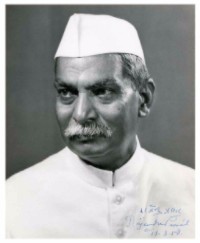
- Born: December 3, 1884, Ziradei, Bengal Presidency, British India (now in Bihar)
- Died: February 28, 1963, (aged 78), Patna, Bihar, India
- Previous office: President of India (26 January 1950 – 14 May 1962)
- Succeeded by: Sarvepalli Radhakrishnan
- Prime Minister: Jawaharlal Nehru
- Vice President: Sarvepalli Radhakrishnan
- Preceded by: Position Established
- Nationality: Indian
- Political party: Indian National Congress
- Spouse(s): Rajvanshi Devi (d.1962)
- Alma mater: University of Calcutta
- Religion: Hinduism
- Awards: Bharat Ratna
Dr. Sarvepalli Radhakrishnan (1888 – 1975)
Sarvepalli Radhakrishnan was an Indian philosopher and statesman who was the first Vice President of India and the second President of India from 1962 to 1967.
General information: 2nd President of India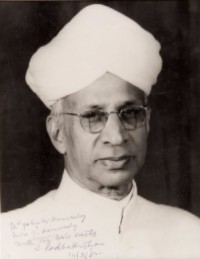
- In office: 14 May 1962 – 13 May 1967
- Prime Minister: Jawaharlal Nehru, Gulzarilal Nanda (Acting), Lal Bahadur Shastri, Gulzarilal Nanda (Acting), Indira Gandhi
- Vice President: Zakir Hussain
- Preceded by: Rajendra Prasad
- Succeeded by: Zakir Hussain
- Vice-President of India (In office): 26 January 1952 – 12 May 1962 | President: Rajendra Prasad | Prime Minister: Jawaharlal Nehru | Succeeded by: Zakir Hussain
- Born: 5 September 1888, Thiruttani, Madras Presidency, British India (now in Tamil Nadu, India)
- Died: 17 April 1975 (aged 86), Madras, Tamil Nadu, India (now Chennai)
- Political party: Independent
- Spouse(s): Sivakamu, Lady Radhakrishnan
- Children: Five daughters, One son
- Alma mater: Madras Christian College, University of Madras
- Profession: Philosopher, Professor
- Religion: Hinduism
Dr. Zakir Husain (1897 – 1969)
Zakir Husain was the 3rd President of India, from 13 May 1967 until his death on 3 May 1969. An educator and intellectual, Husain was the country's first Muslim president, and also the first to die in office.
General information: 3rd President of India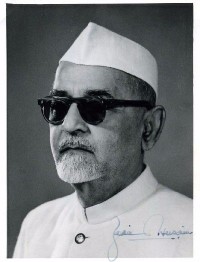
- In office: 13 May 1967 – 3 May 1969
- Prime Minister: Indira Gandhi
- Vice President: Varahagiri Venkata Giri
- Preceded by: Sarvepalli Radhakrishnan
- Succeeded by: Varahagiri Venkata Giri (Acting)
- Vice President of India (In office): 13 May 1962 – 12 May 1967 |President: Sarvepalli Radhakrishnan | Prime Minister: Jawaharlal Nehru, Lal Bahadur Shastri, Indira Gandhi | Preceded by: Sarvepalli Radhakrishnan | Succeeded by: Varahagiri Venkata Giri.
- Governor of Bihar (In office): 6 July 1957 – 11 May 1962 | Chief Minister: Krishna Sinha, Deep Narayan Singh |Preceded by: R. R. Diwakar | Succeeded by: Madabhushi Ananthasayanam Ayyangar.
- Born: 8 February 1897, Hyderabad, Hyderabad State, (now in Telangana, India)
- Died:3 May 1969 (aged 72), New Delhi, Delhi, India
- Political party: Independent
- Spouse(s): Shahjehan Begum
- Alma mater: Aligarh Muslim University, University of Delhi, Humboldt University of Berlin
- Religion: Islam
Shri Varahagiri Venkata Giri (1894 – 1980)
Varahagiri Venkata Giri, commonly known as V. V. Giri, was the fourth President of the Republic of India from 24 August 1969 to 24 August 1974.
General information: 4th President of India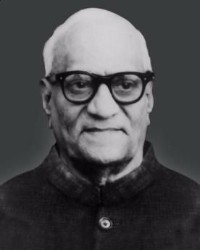
- In office: 24 August 1969 – 24 August 1974
- Prime Minister: Indira Gandhi
- Vice President: Gopal Swarup Pathak
- Preceded by: Mohammad Hidayatullah (Acting)
- Succeeded by: Fakhruddin Ali Ahmed
- Acting President of India (In office): 3 May 1969 – 20 July 1969 | Prime Minister: Indira Gandhi | Preceded by: Zakir Hussain | Succeeded by: Mohammad Hidayatullah (Acting)
- Vice President of India (In office): 13 May 1967 – 3 May 1969 | President: Zakir Hussain |Prime Minister: Indira Gandhi |Preceded by: Zakir Hussain | Succeeded by: Gopal Swarup Pathak.
- Governor of Karnataka (In office): 2 April 1965 – 13 May 1967 | Prime Minister: Indira Gandhi | Chief Minister: Siddavanahalli Nijalingappa | Preceded by: Satyawant Mallannah, Shrinagesh | Succeeded by: Gopal Swarup Pathak.
- Governor of Kerala (In office): 1 July 1960 – 2 April 1965 | Chief Minister: Pattom Thanu Pillai, R. Sankar | Preceded by: Burgula Ramakrishna Rao | Succeeded by: Ajit Prasad Jain.
- Governor of Uttar Pradesh (In office): 10 June 1956 – 30 June 1960 | Chief Minister: Sampurnanand | Preceded by:Kanhaiyalal Maneklal Munshi | Succeeded by: Burgula Ramakrishna Rao.
- Born: 10 August 1894, Berhampur, Madras Presidency, British India (now in Odisha, India)
- Died: 23 June 1980 (aged 85), Madras, Tamil Nadu, India (now Chennai)
- Political party: Independent
- Spouse(s): Saraswati Bai (1904-1978)
- Alma mater: University College Dublin
- Religion: Hinduism
Dr. Fakhruddin Ali Ahmed (1905 – 1977)
Fakhruddin Ali Ahmed was the fifth President of India from 1974 to 1977.
General information: 5th President of India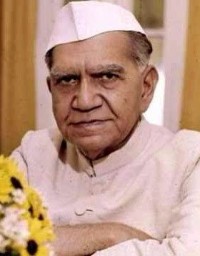
- In office: 24 August 1974 – 11 February 1977
- Prime Minister: Indira Gandhi
- Vice President: Basappa Danappa Jatti
- Preceded by: V. V. Giri
- Succeeded by: Basappa Danappa Jatti (Acting)
- Born: 13 May 1905, Old Delhi, Delhi, Punjab Province, British India
- Died: 11 February 1977 (aged 71), New Delhi, Delhi, India
- Political party: Indian National Congress
- Spouse(s): Begum Abida Ahmed
- Children: 3
- Alma mater: St Catharine's College, Cambridge, St. Stephen's College, Delhi
- Profession: Lawyer
- Religion : Islam
Shri Neelam Sanjiva Reddy (1913 – 1996)
Neelam Sanjiva Reddy was the sixth President of India, serving from 1977 to 1982. Beginning a long political career with the Indian National Congress party in the Indian independence movement, he went on to hold several key offices in independent India—as the first Chief Minister of Andhra Pradesh, a two-time Speaker of the Lok Sabha and a Union Minister—before becoming the youngest-ever Indian president.
General information: 6th President of India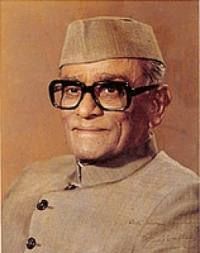
- In office: 25 July 1977 – 25 July 1982
- Prime Minister: Morarji Desai, Charan Singh, Indira Gandhi
- Vice President: B. D. Jatti, Mohammad Hidayatullah
- Preceded by: B. D. Jatti (Acting)
- Succeeded by: Zail Singh
- 4th Speaker of the Lok Sabha (In office):17 March 1967 – 19 July 1969 | Deputy: R.K. Khadilkar | Preceded by: Sardar Hukam Singh | Succeeded by: Gurdial Singh Dhillon
- In office: 26 March 1977 – 13 July 1977 | Deputy: Godey Murahari | Preceded by: Bali Ram Bhagat | Succeeded by: K. S. Hegde.
- 1st Chief Minister of Andhra Pradesh (In office): 12 March 1962 – 20 February 1964 | Governor:Bhim Sen Sachar, Satyawant Mallannah, Shrinagesh | Preceded by: Damodaram Sanjivayya | Succeeded by: Kasu Brahmananda Reddy
- In office: 1 November 1956 – 11 January 1960 | Governor: Chandulal Madhavlal Trivedi, Bhim Sen Sachar | Succeeded by Damodaram Sanjivayya.
- Born: 19 May 1913, Illur, Madras Presidency, British India, (now in Andhra Pradesh, India)
- Died: 1 June 1996 (aged 83), Bangalore, Karnataka, India
- Political party: Janata Party (since 1977)
- Other political affiliations: Indian National Congress (before 1977)
- Spouse(s): Neelam Nagaratnamma
- Alma mater: Government Arts College, Anantapuram, University of Madras
- Religion: Hinduism
Giani Zail Singh (1916 – 1994)
Gyani Zail Singh was the seventh President of India, serving from 1982 to 1987. Prior to his presidency, he was a politician with the Indian National Congress party, and had held several ministerial posts in the Union Cabinet, including that of Home Minister.
His presidency was marked by Operation Blue Star, the assassination of Indira Gandhi, and the 1984 anti-Sikh riots. He died of injuries in 1994 after a car accident.
General information: 7th President of India
- In office: 25 July 1982 – 25 July 1987
- Prime Minister: Indira Gandhi, Rajiv Gandhi
- Vice President: Mohammad Hidayatullah, R. Venkataraman
- Preceded by: Neelam Sanjiva Reddy
- Succeeded by: R. Venkataraman
- Minister of Home Affairs (In office): 14 January 1980 – 22 June 1982 | Prime Minister: Indira Gandhi | Preceded by: Yashwantrao Chavan | Succeeded by: R. Venkataraman
- Secretary General of the Non-Aligned Movement (In office): 12 March 1983 – 6 September 1986 | Preceded by: Neelam Sanjeeva Reddy | Succeeded by: R. Venkataraman
- Born: 5 May 1916, Sandhwan, Punjab, British India
- Died: 25 December 1994 (aged 78), Chandigarh, India
- Political party: Indian National Congress
- Spouse(s): Pardhan Kaur
- Children: One son, Three daughters
- Alma mater: Shaheed Sikh Missionary College
- Religion: Sikhism
Shri R Venkataraman (1910 – 2009)
Ramaswamy Venkataraman was an Indian lawyer, Indian independence activist and politician who served as a Union minister and as the eighth President of India.
Venkataraman was born in Rajamadam village in Tanjore district, Madras Presidency. He studied law and practised in the Madras High Court and the Supreme Court of India. In his young age, he was an activist of the Indian independence movement and participated in the Quit India Movement. He was appointed member of the Constituent Assembly and the provisional cabinet. He was elected to Lok Sabha four times and served as Union Finance Minister and Defence Minister. In 1984, he was elected the seventh Vice-President of India and in 1987, he became the 8th President of India and served from 1987 to 1992. He also served as a State minister under K. Kamaraj and M. Bhaktavatsalam.
General information: 8th President of India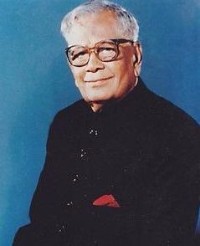
- In office:25 July 1987 – 25 July 1992
- Prime Minister: Rajiv Gandhi, Vishwanath Pratap Singh, Chandra Shekhar, Narasimha Rao
- Vice President: Shankar Dayal Sharma
- Preceded by: Zail Singh
- Succeeded by: Shankar Dayal Sharma
- Vice-President of India (In office): 31 August 1984 – 24 July 1987 | President: Zail Singh| Prime Minister: Indira Gandhi, Rajiv Gandhi | Preceded by: Mohammad Hidayatullah | Succeeded by: Shankar Dayal Sharma.
- Minister of Home Affairs (In office): 22 June 1982 – 2 September 1982 | Prime Minister: Indira Gandhi | Preceded by: Zail Singh | Succeeded by: Prakash Chandra Sethi.
- Minister of Defence (In office): 15 January 1982 – 2 August 1984 | Prime Minister: Indira Gandhi | Preceded by: Indira Gandhi | Succeeded by: Shankarrao Chavan.
- Minister of Finance (In office): 14 January 1980 – 15 January 1982 | Prime Minister: Indira Gandhi | Preceded by: Hemvati Nandan Bahuguna | Succeeded by: Pranab Mukherjee |
- Born: 4 December 1910, Rajamadam, Madras Presidency, British India, (now in Tamil Nadu, India)
- Died: 27 January 2009 (aged 98) New Delhi, Delhi, India
- Political party: Indian National Congress
- Spouse(s): Janaki Venkataraman
- Alma mater: National College, Tiruchirappalli, Loyola College, Madras, Madras Law College
- Profession: Lawyer
- Religion: Hinduism
Dr Shankar Dayal Sharma (1918 – 1999)
Shankar Dayal Sharma was the ninth President of India, serving from 1992 to 1997. Prior to his presidency, Sharma had been the eighth Vice President of India, serving under R. Venkataraman. He was also Chief Minister (1952–1956) of Bhopal, and Cabinet Minister (1956–1967), holding the portfolios of Education, Law, Public Works, Industry and Commerce, National Resources and Separate Revenue. He was the President of the Indian National Congress in 1972–1974 and returned to government as Union Minister for Communications from 1974 to 1977.
The International Bar Association presented Sharma with the 'Living Legends of Law Award of Recognition' for his outstanding contribution to the legal profession internationally and for commitment to the rule of law.
General information: 9th President of India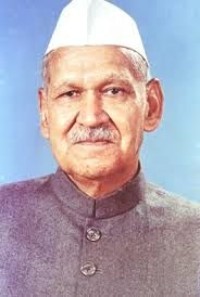
- In office: 25 July 1992 – 25 July 1997
- Prime Minister: P. V. Narasimha Rao, Atal Bihari Vajpayee, H. D. Deve Gowda, I. K. Gujral
- Vice President: K. R. Narayanan | Preceded by: R. Venkataraman | Succeeded by: K. R. Narayanan
- Vice President of India (In office): 3 September 1987 – 25 July 1992 | President: R. Venkataraman | Prime Minister: Rajiv Gandhi, V. P. Singh | Preceded by: R. Venkataraman | Succeeded by: K. R. Narayanan
- Governor of Maharashtra (In office): 3 April 1986 – 2 September 1987 | Chief Minister: Shankarrao Chavan | Preceded by: Kona Prabhakar Rao | Succeeded by: Kasu Brahmananda Reddy
- Governor of Punjab, Administrator of Chandigarh (In office): 26 November 1985 – 2 April 1986 | Chief Minister: Surjit Singh Barnala | Preceded by: Hokishe Sema | Succeeded by: Siddhartha Shankar Ray
- Governor of Andhra Pradesh (In office): 29 August 1984 – 26 November 1985 | Chief Minister: Nadendla Bhaskara Rao, N. T. Rama Rao | Preceded by: Thakur Ram Lal | Succeeded by: Kumudben Manishankar Joshi.
- Born: 19 August 1918, Bhopal, Central India Agency, British India, (now in Madhya Pradesh, India)
- Died: 26 December 1999 (aged 81), New Delhi, Delhi, India
- Political party: Indian National Congress
- Spouse(s): Vimala Sharma
- Children: Two sons, One daughter
- Alma mater: Allahabad University, Agra College, Panjab University, Chandigarh, University of Lucknow, Fitzwilliam College, Cambridge, Harvard University
- Religion: Hinduism
Shri K. R. Narayanan (1920 – 2005)
Kocheril Raman Narayanan was the tenth President of India. Born in Perumthanam, Uzhavoor village, in the princely state of Travancore (present day Kottayam district, Kerala), and after a brief stint with journalism and then studying political science at the London School of Economics with the assistance of a scholarship, Narayanan began his career in India as a member of the Indian Foreign Service in the Nehru administration. He served as ambassador to Japan, United Kingdom, Thailand, Turkey, People's Republic of China and United States of America and was referred to by Nehru as "the best diplomat of the country".
General information: 10th President of India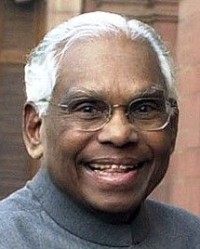
- In office: 25 July 1997 – 25 July 2002
- Prime Minister: I. K. Gujral, Atal Bihari Vajpayee
- Vice President: Krishan Kant
- Preceded by: Shankar Dayal Sharma
- Succeeded by: A. P. J. Abdul Kalam
- Vice President of India (In office): 21 August 1992 – 24 July 1997 | President: Shankar Dayal Sharma | Prime Minister: P. V. Narasimha Rao, Atal Bihari Vajpayee, H. D. Deve Gowda, I. K. Gujral | Preceded by: Shankar Dayal Sharma | Succeeded by: Krishan Kant
- Born: 27 October 1920, Perumthanam, Travancore, British India, (now Uzhavoor, Kerala, India)
- Died: 9 November 2005 (aged 85), New Delhi, Delhi, India
- Political party: Indian National Congress
- Spouse(s): Usha Narayanan (m. 1951–2005)
- Alma mater: University of Kerala (B.A., M.A.), London School of Economics (B.Sc)
- Religion: Hinduism
Dr. A.P.J. Abdul Kalam (1931 – 2015)
Avul Pakir Jainulabdeen "A. P. J." Abdul Kalam was the 11th President of India from 2002 to 2007. A career scientist turned politician, Kalam was born and raised in Rameswaram, Tamil Nadu, and studied physics and aerospace engineering. He spent the next four decades as a scientist and science administrator, mainly at the Defence Research and Development Organisation (DRDO) and Indian Space Research Organisation (ISRO) and was intimately involved in India's civilian space program and military missile development efforts. He thus came to be known as the Missile Man of India for his work on the development of ballistic missile and launch vehicle technology. He also played a pivotal organizational, technical, and political role in India's Pokhran-II nuclear tests in 1998, the first since the original nuclear test by India in 1974.
Kalam was elected as the 11th President of India in 2002 with the support of both the ruling Bharatiya Janata Party and the then-opposition Indian National Congress. Widely referred to as the "People's President," he returned to his civilian life of education, writing and public service after a single term. He was a recipient of several prestigious awards, including the Bharat Ratna, India's highest civilian honour.
While delivering a lecture at the Indian Institute of Management Shillong, Kalam collapsed and died from an apparent cardiac arrest on 27 July 2015, aged 83. Thousands including national-level dignitaries attended the funeral ceremony held in his hometown of Rameshwaram, where he was buried with full state honours.
General information: 11th President of India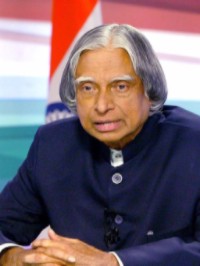
- In office: 25 July 2002 – 25 July 2007
- Prime Minister: Atal Bihari Vajpayee, Manmohan Singh
- Vice President: Krishan Kant, Bhairon Singh Shekhawat
- Preceded by: K. R. Narayanan
- Succeeded by: Pratibha Patil
- Born: 15 October 1931, Rameswaram, Ramnad District, Madras Presidency, British India, (now in Ramanathapuram District, Tamil Nadu, India)
- Died: 27 July 2015 (aged 83), Shillong, Meghalaya, India
- Alma mater: St. Joseph's College, Tiruchirappalli, Madras Institute of Technology
- Profession: Professor, Author, Aerospace scientist
- Religion: Islam
- Awards: Bharat Ratna (1997), Padma Vibhushan (1990), Padma Bhushan (1981)
Smt Pratibha Devisingh Patil (Birth - 1934)
Pratibha Devisingh Patil is an Indian politician who served as the 12th President of India from 2007 to 2012. A member of the Indian National Congress, Patil is the only woman to hold the office. She previously served as the Governor of Rajasthan from 2004 to 2007.
General information: 12th President of India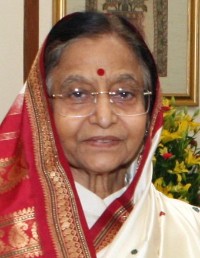
- In office: 25 July 2007 – 25 July 2012
- Prime Minister: Manmohan Singh
- Vice President: Mohammad Hamid Ansari
- Preceded by: A. P. J. Abdul Kalam
- Succeeded by: Pranab Mukherjee
- Governor of Rajasthan (In office): 8 November 2004 – 23 June 2007 | Chief Minister: Vasundhara Raje | Preceded by: Madan Lal Khurana | Succeeded by: Akhlaqur Rahman Kidwai
- Born: 19 December 1934 (age 81), Nadgaon, India
- Political party: Indian National Congress
- Other political affiliations: United Front (1996–2004)
- United Progressive Alliance (2004–present)
- Spouse(s): Devisingh Ransingh Shekhawat (1965–present)
- Alma mater: Pune University, University of Mumbai
Pranab Kumar Mukherjee (Birth - 1935)
Pranab Kumar Mukherjee is the 13th and current President of India, in office since July 2012. In a political career spanning six decades, Mukherjee was a senior leader of the Indian National Congress and occupied several ministerial portfolios in the Government of India. Prior to his election as President, Mukherjee was Union Finance Minister from 2009 to 2012, and the Congress party's top troubleshooter.
Mukherjee got his break in politics in 1969 when Prime Minister Indira Gandhi helped him get elected to the Rajya Sabha, the upper house of Parliament, on a Congress ticket. Following a meteoric rise, he became one of Indira Gandhi's most trusted lieutenants, and a minister in her cabinet by 1973. During the controversial Internal Emergency of 1975–77, he was accused (like several other Congress leaders) of committing gross excesses. Mukherjee's service in a number of ministerial capacities culminated in his first stint as finance minister in 1982–84. Mukherjee was also Leader of the House in the Rajya Sabha from 1980 to 1985.
Mukherjee was sidelined from the Congress during the premiership of Rajiv Gandhi, Indira's son. Mukherjee had viewed himself, and not the inexperienced Rajiv, as the rightful successor to Indira following her assassination in 1984. Mukherjee lost out in the ensuing power struggle. He formed his own party, the Rashtriya Samajwadi Congress, which merged with the Congress in 1989 after reaching a consensus with Rajiv Gandhi. Mukherjee's political career revived when Prime Minister P. V. Narasimha Rao appointed him Planning Commission head in 1991 and foreign minister in 1995. Following this, as elder statesman of the Congress, Mukherjee was the principal and architect of Sonia Gandhi's ascension to the party's presidency in 1998.
When the Congress-led United Progressive Alliance (UPA) came into power in 2004, Mukherjee won a Lok Sabha (the popularly elected lower house of Parliament) seat for the first time. From then until his resignation in 2012, Mukherjee was practically number-two in Prime Minister Manmohan Singh's government. He held a number of key cabinet portfolios—Defence (2004–06), External Affairs (2006–09) and Finance (2009–12)—apart from heading several Groups of Ministers (GoMs) and being Leader of the House in the Lok Sabha. After securing the UPA's nomination for the country's presidency, in July 2012 Mukherjee comfortably defeated P. A. Sangma in the race to Rashtrapati Bhavan, winning 70 percent of the electoral-college vote.
General information: 13th President of India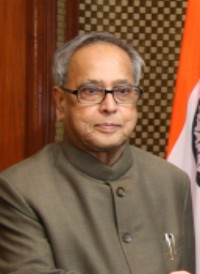
- In office: 25 July 2012 – Current (Assumed office)
- Prime Minister: Manmohan Singh, Narendra Modi
- Vice President: Mohammad Hamid Ansari
- Preceded by: Pratibha Patil
- Minister of Finance (In office): 24 January 2009 – 26 June 2012 | Prime Minister: Manmohan Singh | Preceded by: Manmohan Singh | Succeeded by: P.Chidambaram
- In office: 5 January 1982 – 31 December 1984 | Prime Minister: Indira Gandhi, Rajiv Gandhi | Preceded by: R. Venkataraman | Succeeded by: V. P. Singh.
- Minister of Defence (In office): 22 May 2004 – 26 October 2006 | Prime Minister: Manmohan Singh | Preceded by: George Fernandes | Succeeded by: A. K. Antony
- Minister of External Affairs (In office): 24 October 2006 – 22 May 2009 |Prime Minister: Manmohan Singh |Preceded by: Manmohan Singh | Succeeded by: S. M. Krishna
- In office: 10 February 1995 – 16 May 1996 | Prime Minister: P. V. Narasimha Rao | Preceded by: Dinesh Singh | Succeeded by: Sikander Bakht
- Deputy Chairman of the Planning Commission (In office): 24 June 1991 – 15 May 1996 | Prime Minister: P. V. Narasimha Rao | Preceded by: Mohan Dharia | Succeeded by: Madhu Dandavate
- Leader of the House (Lok Sabha) (In office): 22 May 2004 – 26 June 2012 | Prime Minister: Manmohan Singh | Preceded by: Atal Bihari Vajpayee | Succeeded by: Sushil Kumar Shinde
- Leader of the House (Rajya Sabha) (In office): January 1980 – 31 December 1984 | Prime Minister: Indira Gandhi | Preceded by: K.C. Pant | Succeeded by: V.P. Singh
- Member of Lok Sabha for Jangipur (In office): 10 May 2004 – 26 June 2012 | Prime Minister: Manmohan Singh | Preceded by: Abul Hasnat Khan | Succeeded by: Abhijit Mukherjee
- Member of Parliament (Rajya Sabha) for West Bengal, Gujrat (5 Terms)(In office): 24 July 1969 – 10 May 2004 (5 Terms)
- Born: 11 December 1935 (age 80) Mirati, British Bengal, British India
- Political party: Apolitical
- Other political Affiliations: Indian National Congress (1969–86; 1989–2012), Rashtriya Samajwadi Congress (1986–89)
- Spouse(s): Suvra Mukherjee (m. 1957-died 2015)
- Children: Sharmistha, Abhijit, Indrajit
- Residence: Rashtrapati Bhavan
- Alma mater: University of Calcutta
- Religion: Hinduism
Ref: Google, Wikipidia, http://presidentofindia.nic.in/
Sharing is caring
Related Post
400th Anniversary of William Shakespeare's death.
Apple announces to start iOS App Development Centre in Bengaluru from 2017
The President of India and Former Presidents
World's first commercial quantum computer by Google
Nasa's New Horizons Spots Kuiper Belt Object
International Nurses Day, 12th May.